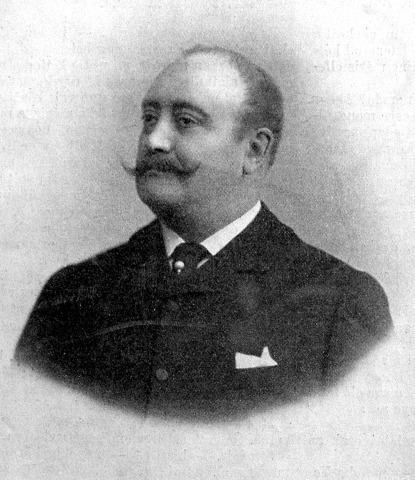Preceded by Laszlo Voros Name Ferenc Kossuth Succeeded by Karoly Hieronymi | Profession engineer, politician Parents Lajos Kossuth Signature Education University of London | |
 | ||
Political party Independence Party of 48Independence Party of 48 (Kossuth Party) Grandparents Karolina Weber, Laszlo Kossuth Uncles Simon Kossuth, Gyorgy Kossuth Aunts Zsuzsanna Kossuth, Emilia Kossuth, Lujza Kossuth, Karolina Kossuth | ||
Ferenc Lajos Ákos Kossuth de Udvard et Kossuthfalva (16 November 1841 – 25 May 1914) was a Hungarian civil engineer and politician.
Biography
The son of Hungarian revolutionary Lajos Kossuth, Ferenc was educated at the Paris Polytechnic and the London University, where in 1859 he won a prize for political economy. After working as a civil engineer on the Dean Forest railway, he went (1861) to Italy, where he resided for the next 33 years, taking a considerable part in the railway construction of the peninsula, and at the same time keeping alive the Hungarian independence question by a whole series of pamphlets and newspaper articles.
At Cesena in 1876 he married Emily Hoggins. She died in 1887 and is buried at Cimitero degli Allori, Florence. The monument reads: "Sacred to the dearly loved memory of the n.d. Emily of Kossuth and Udvard, erected by Francis Kossuth, her broken hearted husband whose darling, she was in life and is in death."
In 1885 he was decorated for his services by the Italian government. His last great engineering work was the construction of the steel bridges for the Nile. In 1894 he escorted his father's remains to Hungary, and the following year resolved to settle in his native land and took the oath of allegiance. As early as 1867, he had been twice elected a member of the Hungarian diet, but on both occasions refused to accept the mandate. On 10 April 1895, he was returned for Tapolca and in 1896 for Cegléd, and from that time took an active part in Hungarian politics. In the autumn of 1898 he became the leader of the obstructionists or “Independence Party,” against the successive Dezső Bánffy, Kálmán Széll, Károly Khuen-Héderváry and István Tisza administrations (1898-1904), exercising great influence not only in parliament but upon the public at large through his articles in the Egyetértés.
The elections of 1905 having sent his party back with a large majority, he was received in audience by the king and helped to construct the Sándor Wekerle ministry, in which he was Minister of Commerce. In his cabinet role, Kossuth had many opportunities of turning to account his technical and economic experience. At the critical period of the Coalition, he showed throughout solid ability, in contrast to Gyula Justh, who in 1909 brought about the break-up of the Independence Party, which split into the Kossuth and the Justh wings.
In consequence of increasing ill-health Kossuth withdrew more and more from active politics, and only appeared in Parliament on special occasions. When in the summer of 1913 the two wings of the Independence Party were again united Count Mihály Károlyi undertook their actual leadership. In articles published in the Budapest, Kossuth continued to express his views. He made his last appearance in Parliament on 30 October 1913. From his bed of sickness, to which he was confined from the autumn of 1913 onwards, he declined any participation with Károlyi against the Triple Alliance policy of the dual monarchy.
